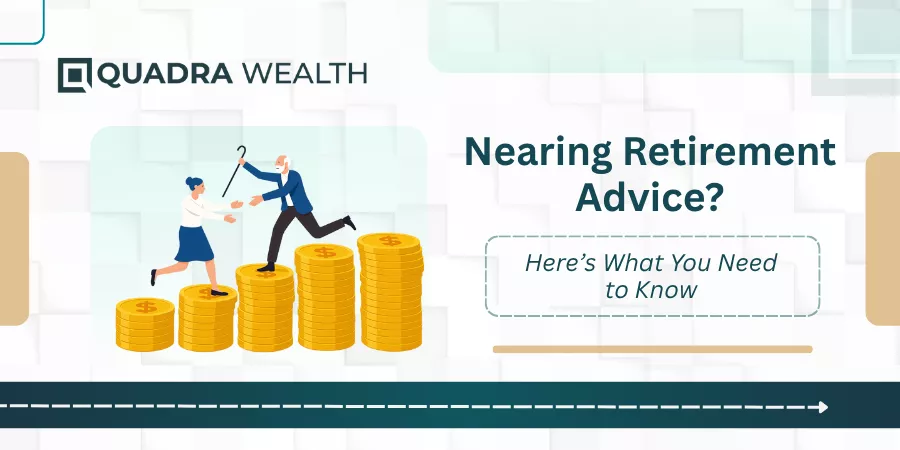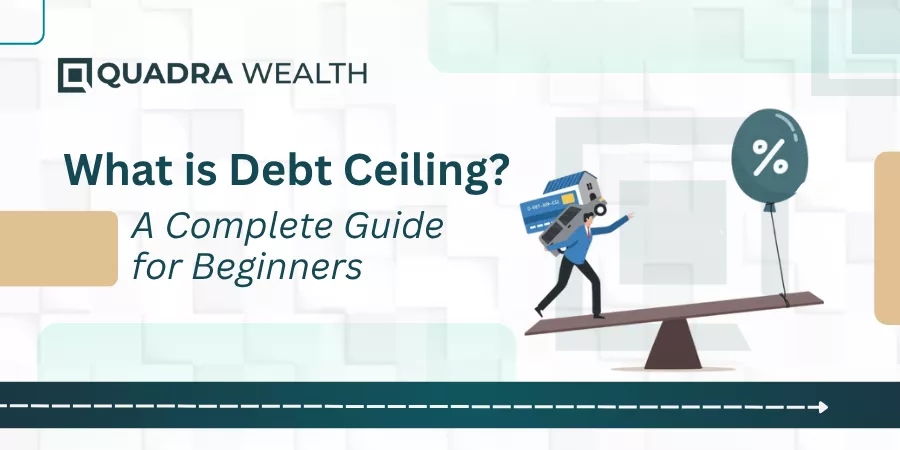In this blog write-up let us unveil a thorough understanding on how an autocallable equity linked note works. Alongside, we shall also be providing you with a touch-down into features, benefits, risk factors, and other revolving specifics connected with the same. Read on!
Introduction
With inflation hitting every corner of the globe, you may wonder how your 9-5 job is going to fetch you the lifestyle you have always dreamt of. How much ever you earn, you don’t seem to be getting enough of it.
Therefore, you must choose an investment wheel that can take care of your immediate financial needs while also helping you create wealth baskets for you to have a sustainable future.
Here comes structured notes that combine an optimal mix of debt and equity. These are investment plans that help investors customize their portfolios seamlessly.
autocallable equity linked note is the structured product we are going to talk about in this comprehensive investment-styled blog. Helping you get started here:

Autocallable equity linked note- Meaning and Conceptualization explained
An autocallable equity linked note is a type of structured note that combines debt with equity.
This is a type of ELN that uses derivative options such as ‘call’ or ‘put’ to leverage returns on the investment.
While, the note is linked to equity-based assets like shares, a basket of securities, index values of stocks, or foreign currencies to name a few.
This is a non-principal protected investment wherein investors are eligible to receive regular coupon payouts throughout the term of the portfolio or until the time the notes are auto-called by the product issuing firms.
What are the features of autocallable equity linked notes?
These are the salient features of autocallable equity linked notes. Helping you with a run-down into the same:
- Structure of the component
The autocallable equity linked note comprises a debt component and equity-based assets. The debt component is linked to a fixed maturity period and pays periodic interest payments similar to that of bonds or fixed-income annuities.
However, as this is a structured note, the performance of the note is based on the performance of the underlying assets the note comprises of. The underlying assets are equity-based assets like stock indexes or independent stocks.
Based on the investor’s tailor-made preferences, you can also include a basket of shares or securities inside the note.
Along with debt and equity, the autocallable equity linked note also has an inbuilt autocall feature.
This means the performance of underlying equity is gauged during fixed periods typically known as observation days. Once the preset conditions of the note are met, the note stands redeemed.
Therefore, an autocallable equity linked note comprises a three-structural outlay comprising debt, equity, and an inbuilt autocall feature.
- Initial investment
Each autocallable note starts from $1000 onwards. However, investors can further keep adding denominations of $1000 notes to keep diversifying their portfolios.
Although investors keep buying these notes at set prices, the notes are aimed to provide a complete or partial level of principal protection for their capital investment amounts.
- Coupon payments
Coupon payments can be periodic if the terms of the note state so. The coupons are sometimes carried forward from one observation period to another in case of failed autocalls. Interest payment is what is referred to as coupon payment.
Investors who receive regular coupon payments from autocallable notes find this a lucrative source of passive income as compared to traditional bonds or fixed-income securities.
On the contrary, if the assets do not perform well, then your potential to receive higher payouts is affected by the performance of these underliers. The recovery of your principal gets jeopardised if you make this as the choice of your investment.
- Autocall feature explained
This is the main-stream feature available in any form of autocallable note. The inbuilt autocall feature is embedded into the note. As and when certain conditions are met as specified by the product issuing firms on the performance of underlying equity, the notes stand autocalled.
In other words, the notes make an early redemption here. Here, the investor will receive the principal amount and enhanced yields in the form of coupon payouts.
5. A working mechanism of an autocall trigger
For an autocall trigger to be initiated by the issuing firm, the underlying performance of equity assets as embedded on the note must satisfy preset conditions as curated on the note at the initial stages of its design.
The trigger levels would be established across the initial purchase points of asset values and the values must stay on par or reach above limits aw have been set on the note.
Here, we expect the final sale point values of underlying assets reach the trigger limits as have been set on the note. And, the underlying assets of the note are gauged on specific observation dates.
While these values are achieved, the notes get redeemed earlier than the maturity date or term period of the note. The notes are auto-called by product issuers and they stand redeemed instantly.
- Notes that are not auto-called until maturity
If the notes are not auto-called until maturity, then the notes automatically get redeemed during the predetermined maturity period as stated on the terms and conditions of the disclosures.
By the end of the maturity term, investors get their principal amount and accrued value of coupons the notes have garnered throughout the term of the portfolio.
The only specification here is that the underlying equity does not fall below barrier levels as have been set on the notes at the time they were designed by product issuers.
- Know-how of key types of barriers as applicable to autocallable notes
There are predominantly two types of barrier limits that are set on autocallable notes. Let us have a brief understanding of the same:
- Autocall barrier- If the price of the underlying equity assets perform well and hit this level, the notes stand redeemed early.
- Knock-in barrier- If the underlying equity falls below this level, then the potential payout at the end of the term gets impacted adversely. This means that investors may face a partial loss of their capital investment and receive reduced payouts once the notes mature.
- Equity-shares option- In case the autocallable equity index notes have ‘put’ options embedded on them, then investors may receive underlying equity shares instead of their principal amount.
A working example of autocallable equity linked notes
You might have invested in an autocallable equity linked note that is tied to a stock index. Here is a simplified illustration of how it works:
- Value of the investment= $1000
- Coupon or interest rate- 5% pa
- Autocall barrier: If the index level stands at or goes above 110% of the index value on observation dates held annually, the note shall get redeemed
- Knock-in barrier- If the stock value goes below 80%, then there could be a significant loss of principal or reduced final payout returns by maturity.
Scenario 1: If the index value of underlying assets of the autocallable note reaches 110%, then the note gets redeemed before its maturity date.
The investor receives the principal amount of $1000 (in this example) plus accrued coupons/ dividend earnings on the payment plan (if this adds to $100). The total amount the investor receives upon the autocall date stands at $1100.
The investor need not wait until maturity as the notes get auto called and they get redeemed.
Scenario 2: If the index value of underlying assets drops to 80%, then the investor may not get his complete principal money back. This can also mean reduced returns at the end of maturity of the note as the product investment will be affected in this scenario.
Note: In the event of autocall redemption, the notes may suffer liquidity or may be jeopardized if investors want to let go of them. Therefore, the investment in autocallable equity linked notes is suitable for investors who can handle a reasonable level of risk tolerance under their belt despite the volatility of the underlying assets the notes are linked with.
What are the benefits of autocallable equity linked notes?
These are the lucrative benefits you get when you invest in autocallable equity linked notes. Let us see what they are:
- Better payout options
Investors get coupon payments from time to time. The coupons accrue in case of failed autocalls too. If the underlying equity assets perform well, then you get coupons or higher yields as the upscale returns are tied to the performance of underlying assets the notes are linked with. The yields can therefore be better as compared to regular bonds or fixed-income securities.
- Customization
You can customize autocalalble equity linked notes according to the investing parameters you have in mind. You can choose your own set of underlying assets under the notes and your term of investment. Above all, you can select your strike prices or initial price values for the investment portfolio.
- Wide selection of investment portfolios to choose from
As an investor, you can choose a wide variety of equity securities as a part of your structured product investment portfolio. The asset allocation can be in the form of independent stocks, a basket of securities, or currencies to name a few.
What are the risk factors you have connected with autocallable equity linked notes?
These are the risk factors you have when you have to deal with autocallable equity-linked notes. Let us understand what they are:
- Market risk
As the autocallable notes are tied to the performance of underlying equity assets, their poor performance can impact returns or bring losses to the investors.
- Autocall risk
Although an autocall implies earlier redemption helping investors earn their principal money and investment-based coupons, there is a loss of premium for investors of these notes if equity continues doing well even after the notes have been auto-called.
- Credit risk
Credit risk refers to the risk of the issuing company signing up for their bankruptcy. If this event happens, then the investors may not be able to receive their principal investment and the interest payments too.

The Bottom Line
Structured notes come to you with a wide range of complexities. Therefore, you must learn the different types of risk factors they come with. This is before you sign in on the dotted lines.
As a newbie investor, it is always a better idea to get solicited advice from an experienced wealth manager or an experienced investment banker to know how different investment products work.
You must also know the tax implications that apply to every endowment plan that you choose.
What are your thoughts on this? Do let us know in the comments!






